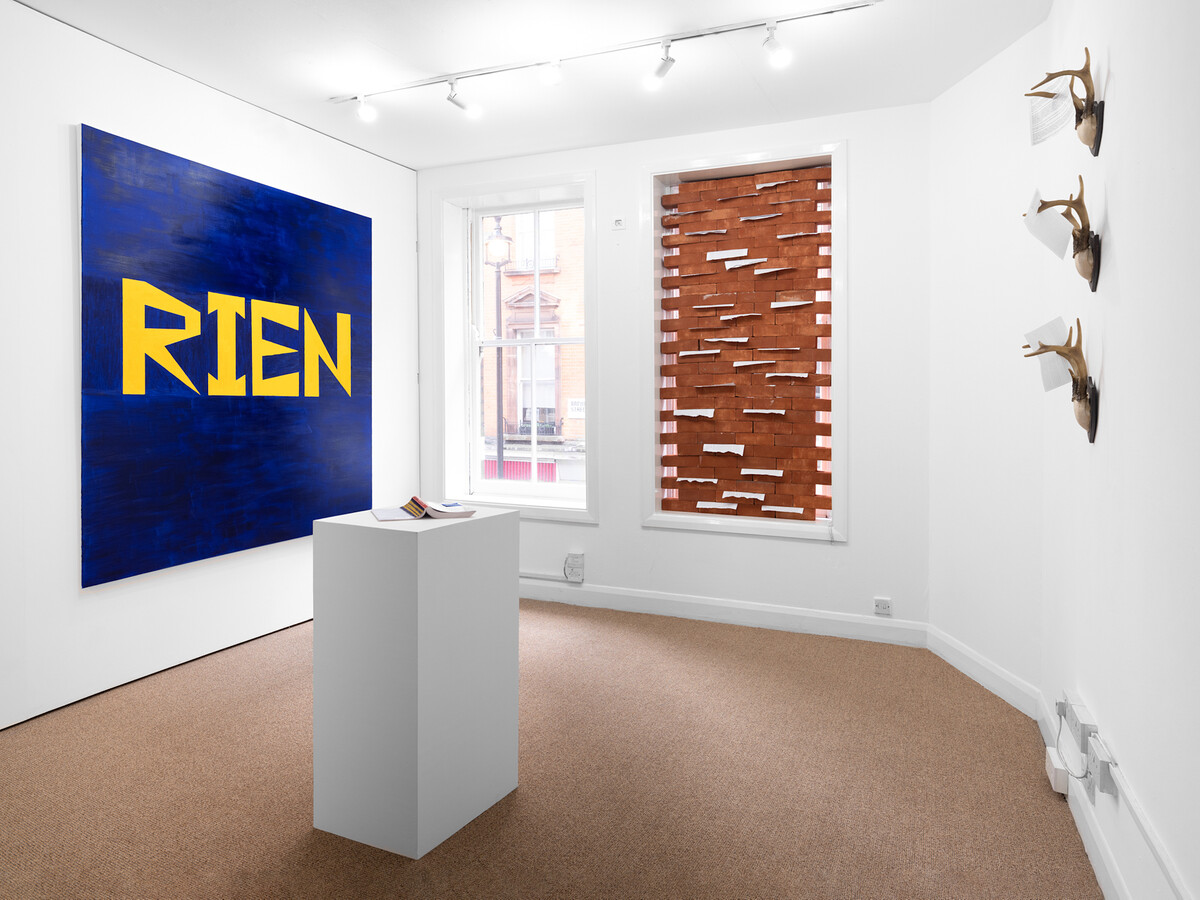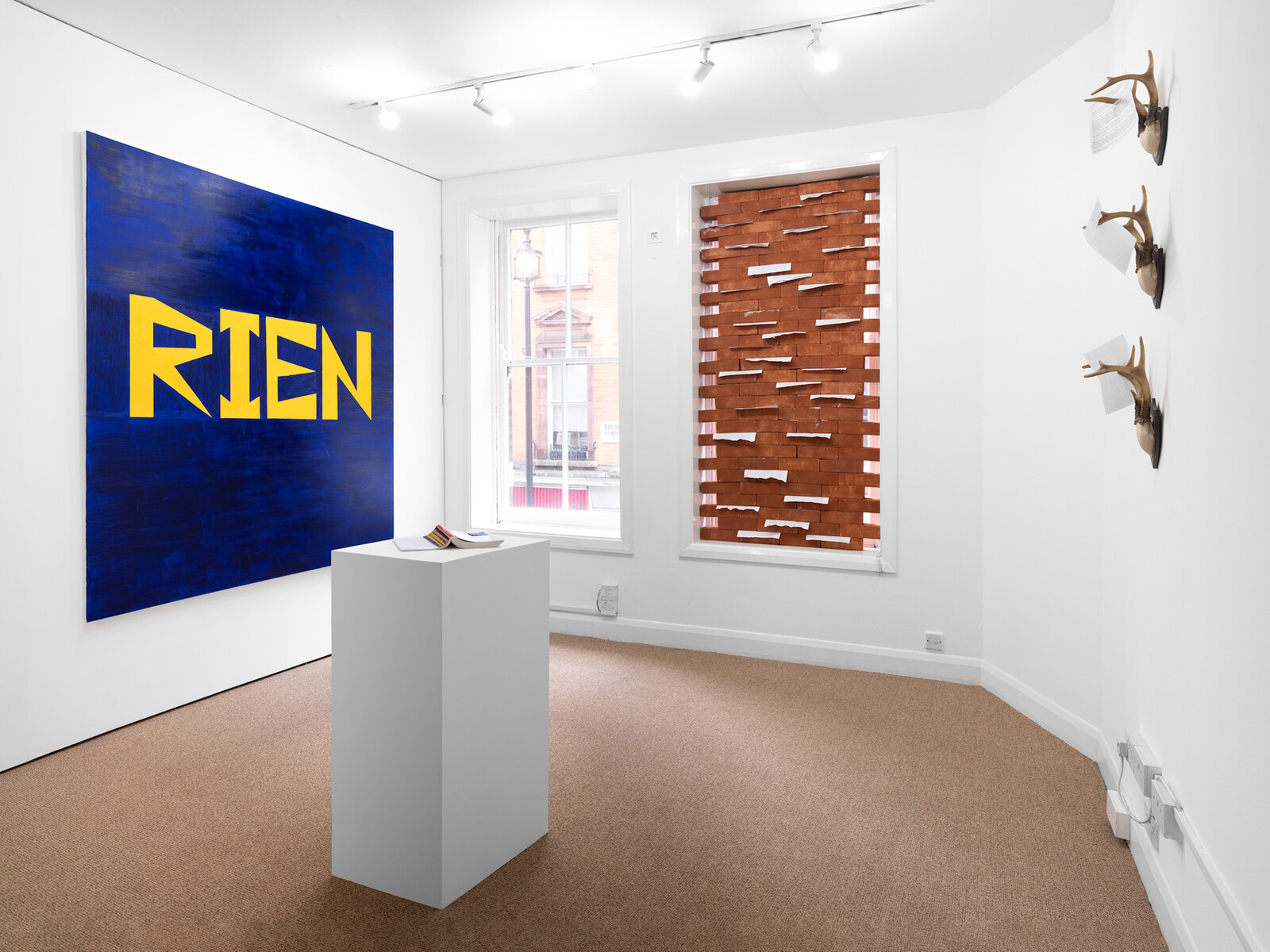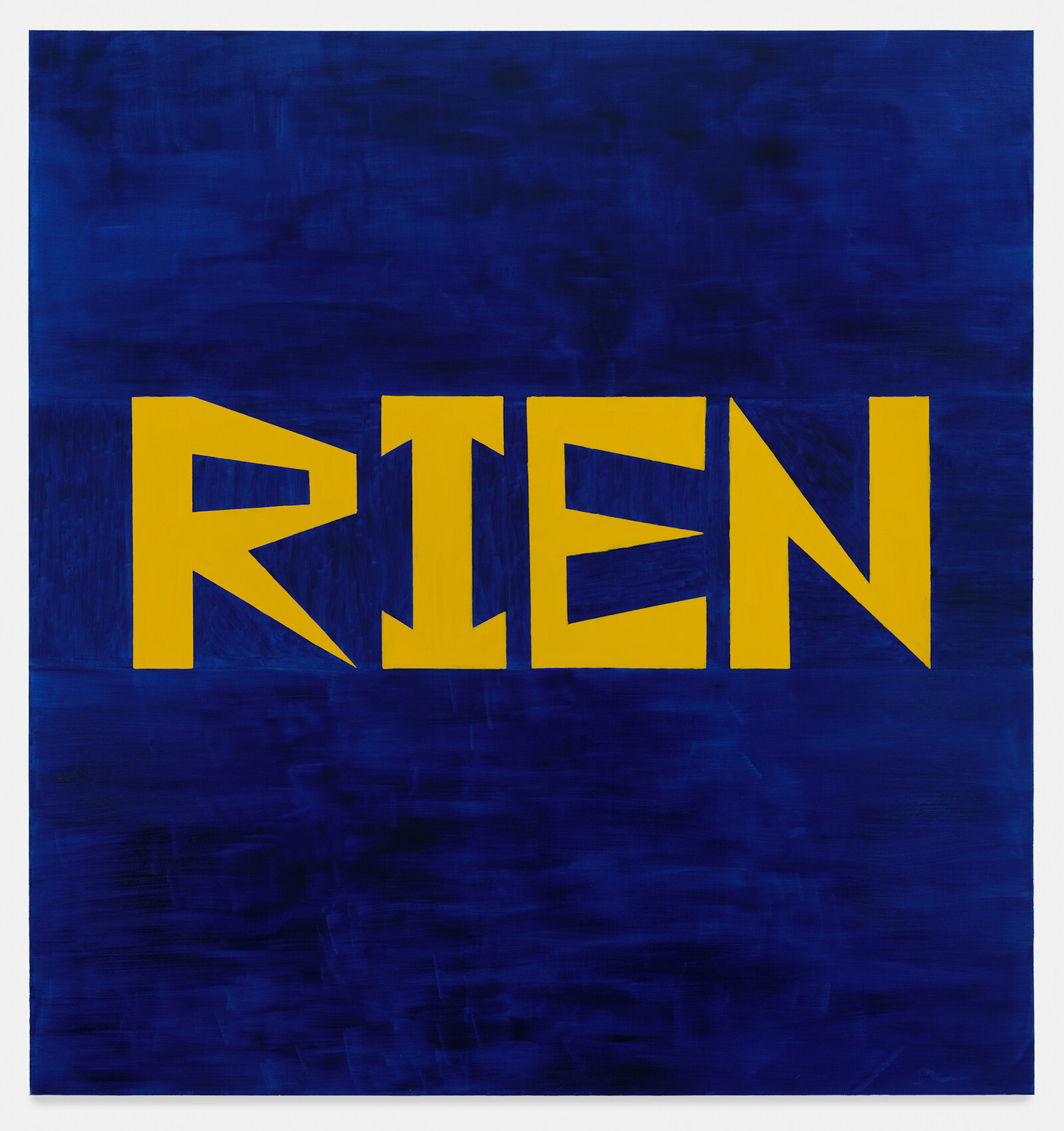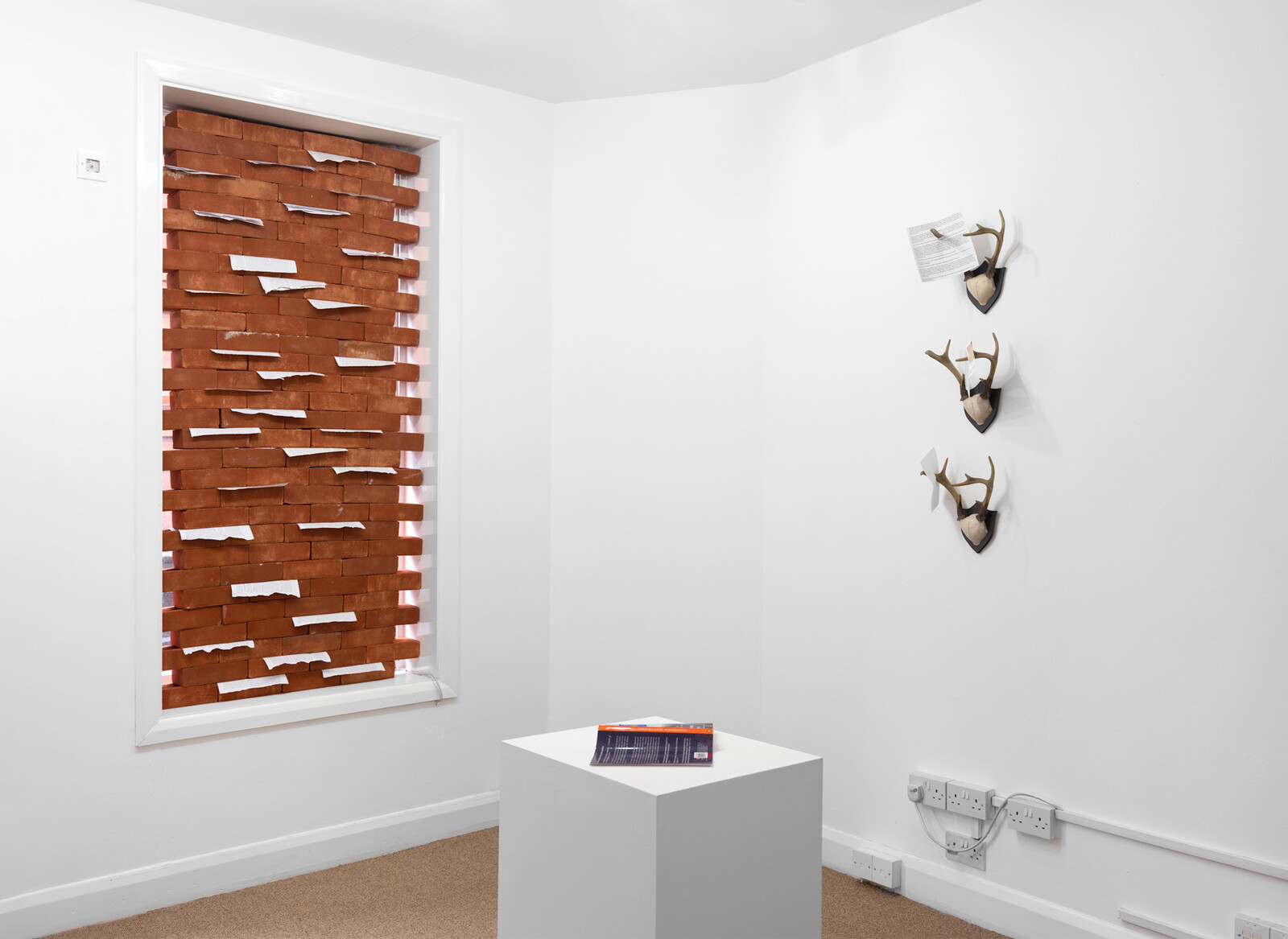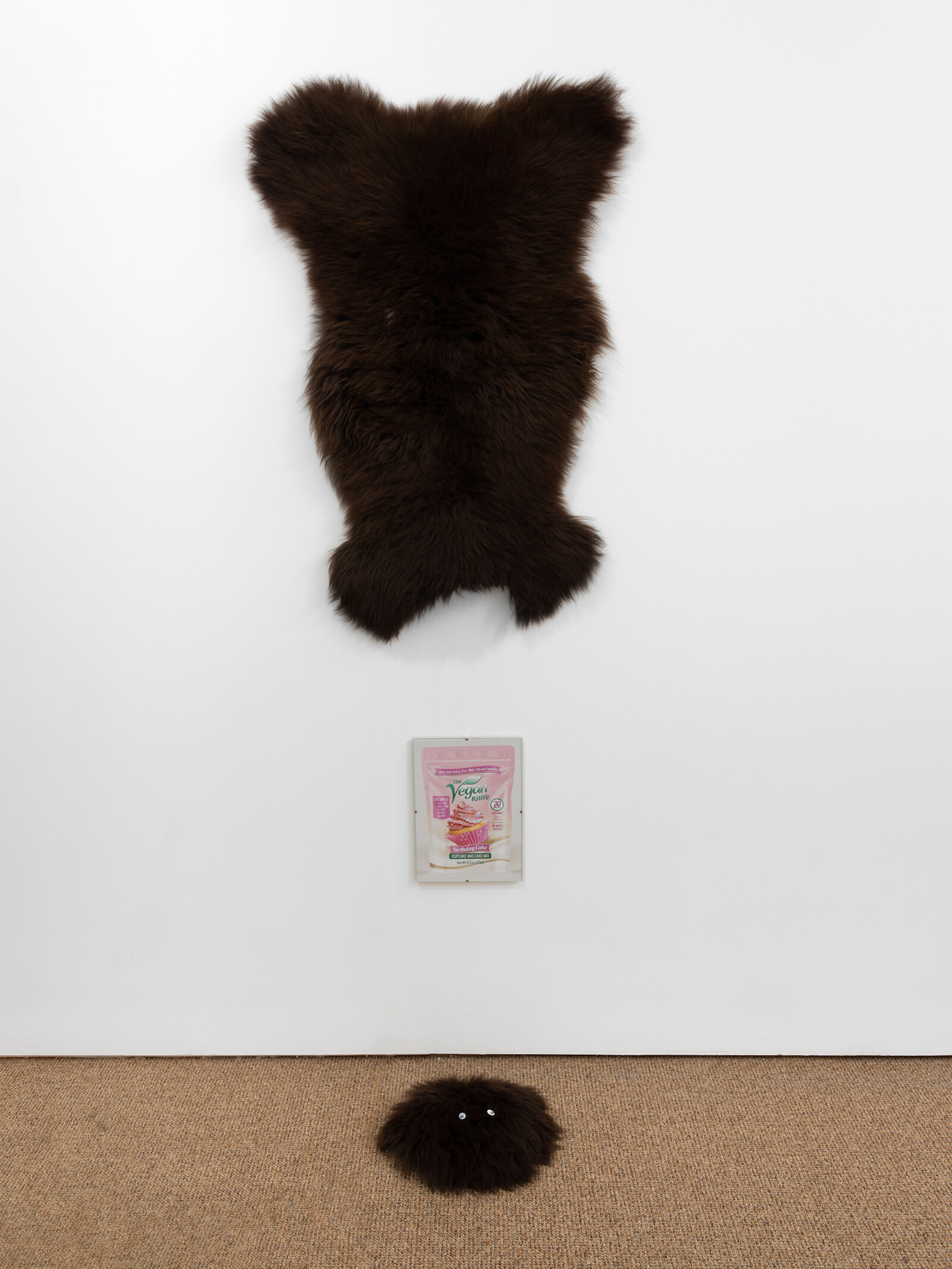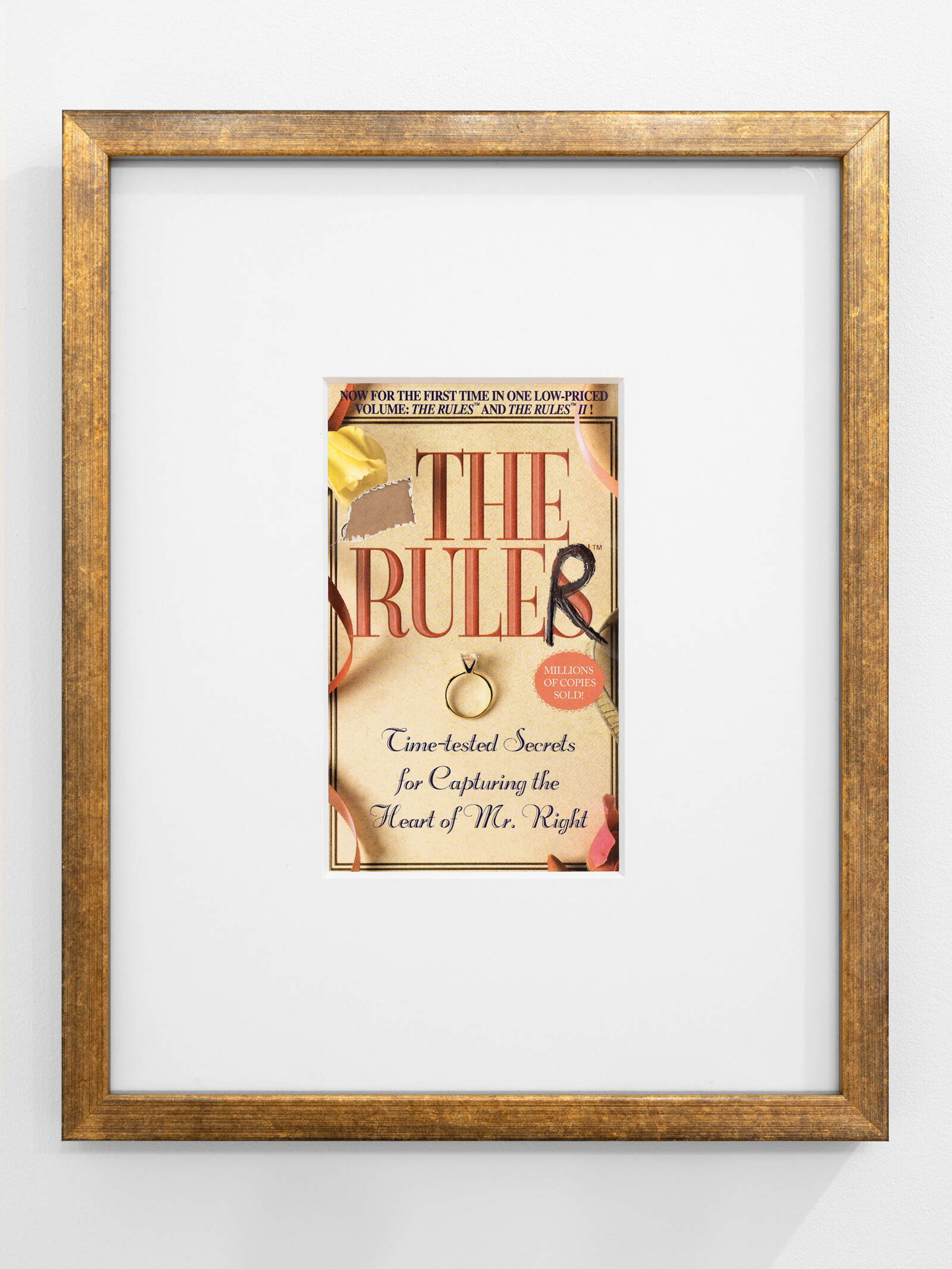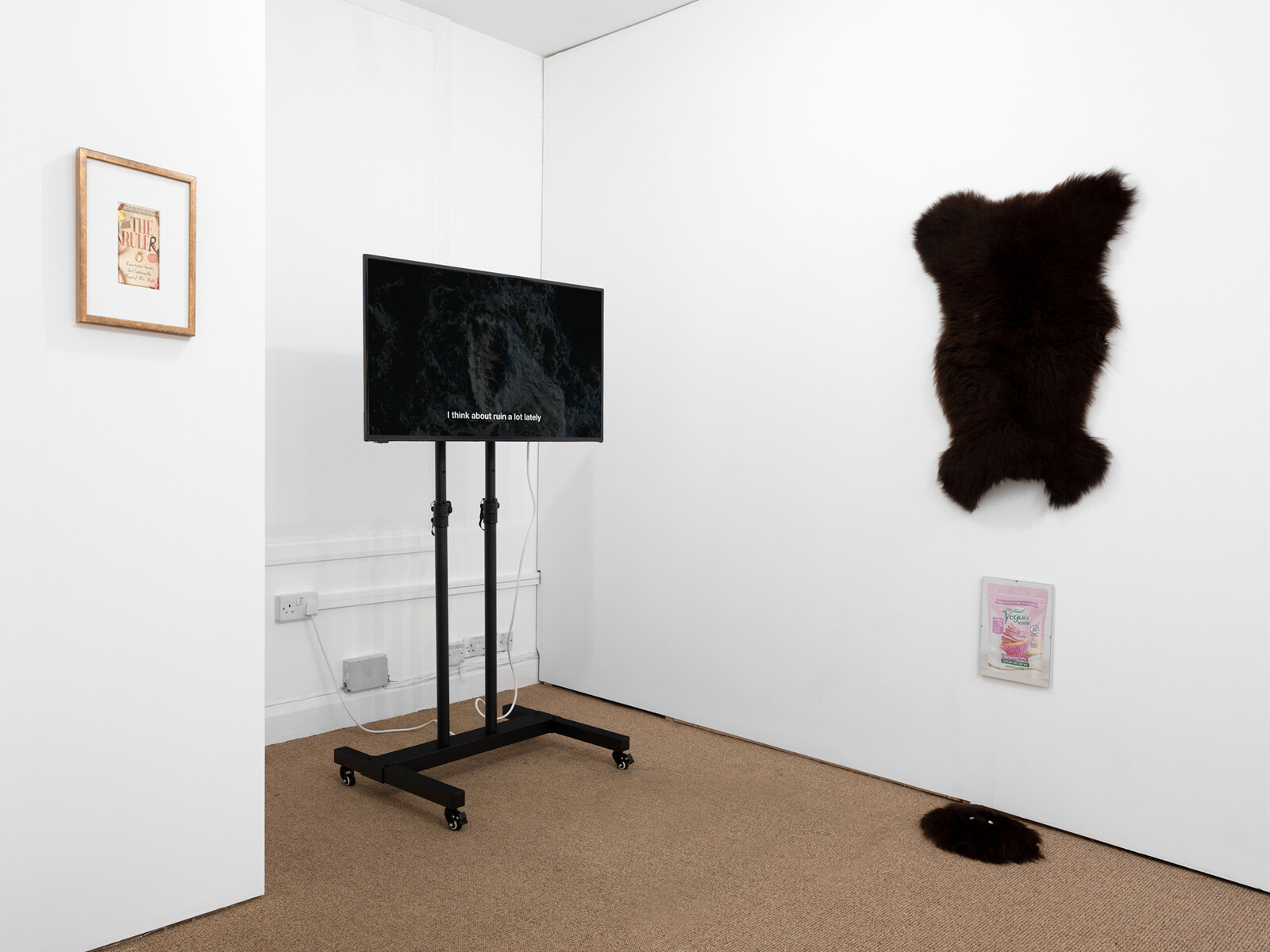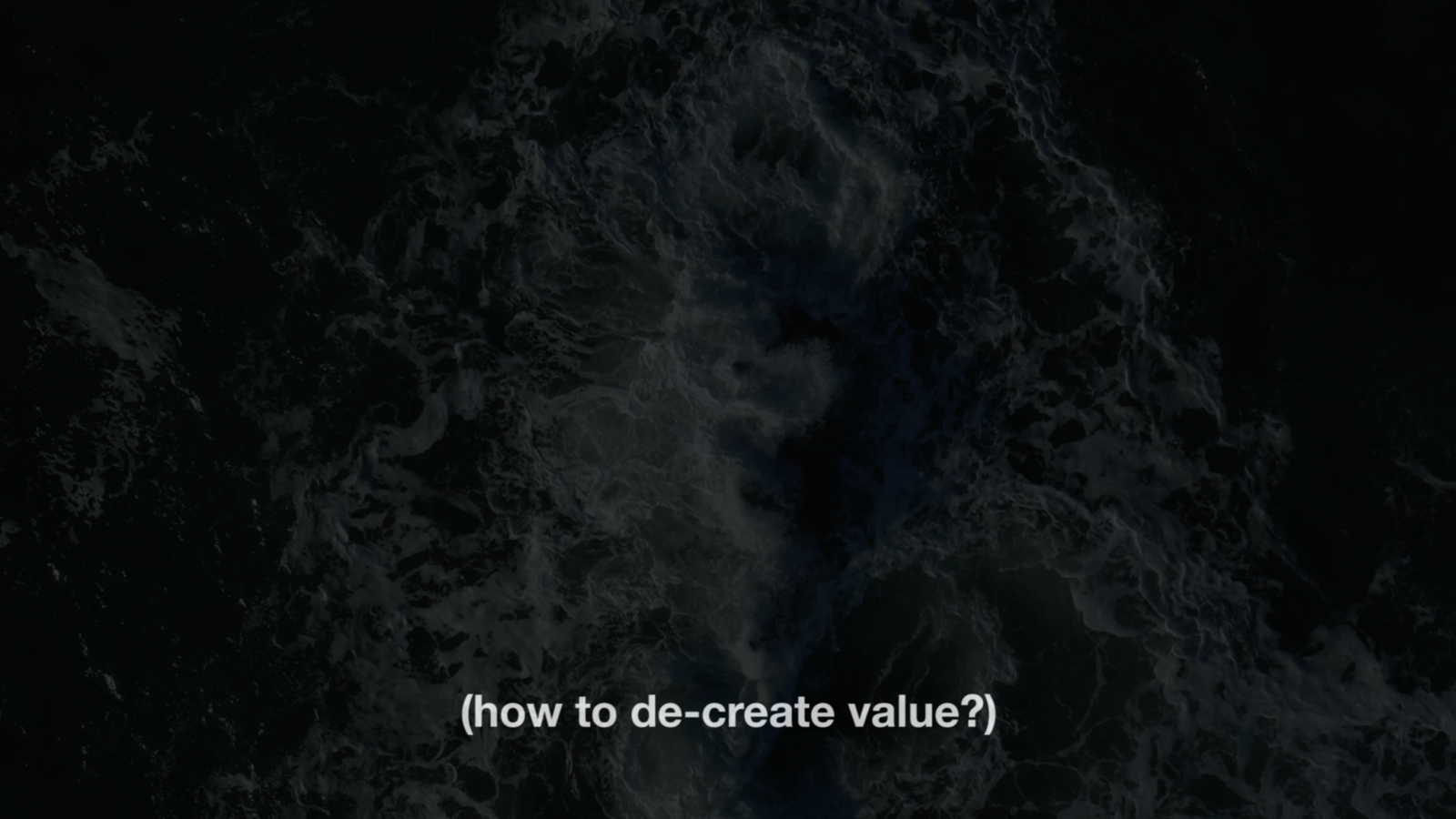A 2001 paperback edition of The Black Jacobins (1938), C. L. R. James’s study of the dialectical relationship between the Haitian and French revolutions, rests on a plinth in Hannah Black’s exhibition “Ruin/Rien” at Arcadia Missa (Ruin II, all works 2020). Its cover features a detail of Anne-Louis Girodet-Trioson’s romanticist 1797 portrait of Jean-Baptiste Belley, a freed slave who attained the rank of captain during the rebellion and was the first Black deputy elected to the French National Convention. The artist has placed a post-it note on the upper-right corner of the cover. Written on it, in yellow pastel against a blue background, is the word “RUIN.”
By revealing that the Haitian rebellion—which overthrew French colonial rule in one of the most consequential slave uprisings in history—was central to the upheavals in Paris, James argues that the question of slavery underwrites modern definitions of liberty. “Ruin/Rien” features a heterogeneous suite of new sculptures and videos that draw connections between these revolutionary events and the idea of the autonomous artwork. The bricked-up window of Bastille, for example, references both minimalist sculpture and the Bastille cell in which the Marquis de Sade was imprisoned and where he wrote The 120 Days of Sodom, pages from which are interleaved with the bricks. Tracing Belley’s gaze across the gallery, we see Oof. This oil-on-canvas rendition of the post-it cartoon that appears on the book is a scale appropriation of Ed Ruscha’s iconic 1962 painting OOF: Black’s version announces “RIEN.” With essayistic reach, this exhibition digests the visual politics of contemporary art to explore how institutional structures—from French nobility to contemporary art museums—are legitimated by practices of signification.
In his 1993 book On the Museum’s Ruins, Douglas Crimp contended that artistic strategies of reproduction and appropriation—such as those found in Ruscha’s artist books—undermined the “originality, authenticity and presence” that had previously been “essential to the ordered discourse of the museum.”1 Black’s detournément of “oof” to “rien” reframes these conversations by demonstrating that social reproduction, a line of inquiry often valorized in postmodern critiques of the museum, is itself neither neutral nor universally inclusive. As indicated on a printed text skewered on a fake deer antler in the wall-mounted sculpture The Hunt I, “rien,” or “nothing,” was King Louis XVI’s aloof diary entry on July 14, 1789, the day the Bastille was stormed. His surreal, paradoxical jotting—which may have been referring to an unsuccessful hunt earlier that day—anticipates the semantic nihilism that many artists would later diagnose as a product of industrial alienation.
While Ruscha’s work can be read in a lineage of artists who identify such alienation as characteristic of urban life, it was Charles Baudelaire, observing Georges-Eugène Haussmann redevelop the cobblestoned streets of medieval Paris in his 1857 collection Les Fleurs du mal, who defined this spirit. Lorraine O’Grady explored this genealogy in her 1998 photographic installation Studies for Flowers of Evil and Good, a series of cibachrome diptychs that superimpose Baudelaire’s poetry and images of him and Jeanne Duval, the Haitian actress and dancer who was his mistress and muse, upon details from Pablo Picasso’s Les Demoiselles d’Avignon (1907). “Ruin/Rien” evokes this self-reflexive critique of the entanglement of modernist appropriation and colonial expropriation.
Nearby to Oof, the soundless, four-minute video Ruin I (2020) loops on a flat-screen monitor. Closed caption text recounts a scandal concerning a “well-intentioned artwork” that, the viewer is informed, heedlessly perpetuated a global system of racial violence. Black does not reanimate the spectacle of the artwork—a white painter’s depiction of Black suffering displayed in the 2017 Whitney Biennial in New York—by naming it. The viewer instead learns that a critical response to the artwork’s complicity in “bringing ruin to lives” was met with contempt, eliciting debates concerning the “inviolability” of art. The proximity of Ruin I and Ruin II to Oof assesses a cultural logic in which Blackness is coded as nothingness at once inherent to, and externalized by, the production of value. “How to de-create value?” the video asks, querying contemporary art’s genesis in the conditions of racial capitalism.
Though written mostly in the third person, the video’s diaristic voice channels the activist vernaculars that have characterized recent discussions of institutional liberation, in which Black has participated.2 An entrancing run-on sentence concludes it: “I still believe that revolutionary collective practice / will one day remake the world / but it is too late for a lot of us / some dead and some still living.” The sentiment appeals to what Christina Sharpe, drawing on the work of poet Kamau Brathwaite, has termed “to dream Haiti”, meaning “to enter and inhabit the dream and reality of revolution.” 3 Black’s brief, thoughtful parable appears over grayscale footage of water churning in a hydroelectric dam—an oceanic reflection on the dynamics of transference through which power is produced.
Douglas Crimp, On the Museum’s Ruins (Cambridge, Massachusetts: MIT Press, 1995), 58.
See, for example, Hannah Black, Tobi Haslett, and Ciarán Finlayson, “The Tear Gas Biennial,” Artforum (July 17, 2019): https://www.artforum.com/slant/a-statement-from-hannah-black-ciaran-finlayson-and-tobi-haslett-on-warren-kanders-and-the-2019-whitney-biennial-80328.
Christina Sharpe, In the Wake: On Blackness and Being (Durham, North Carolina: Duke University Press, 2016), 109.
